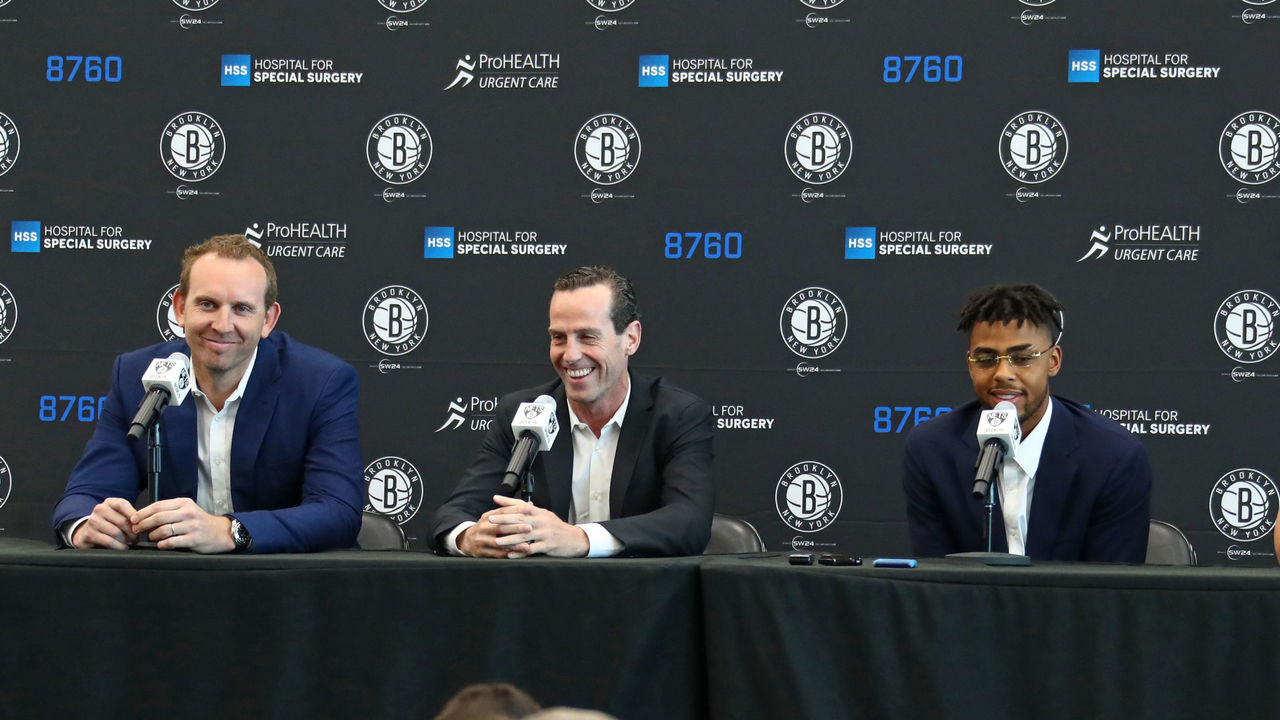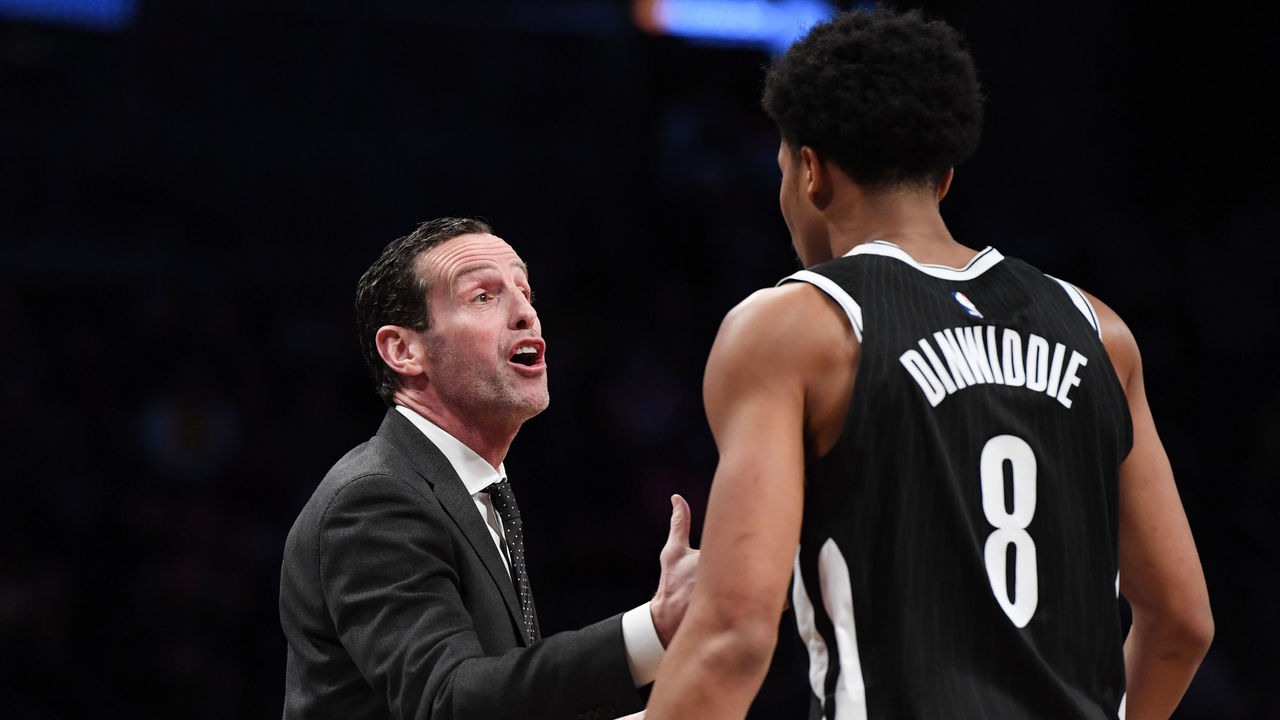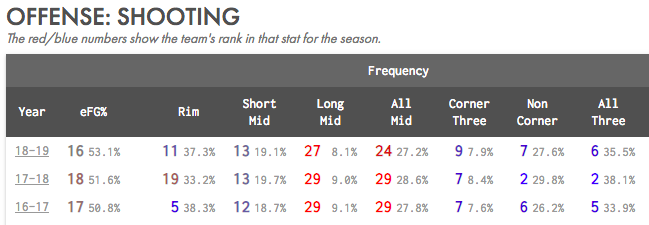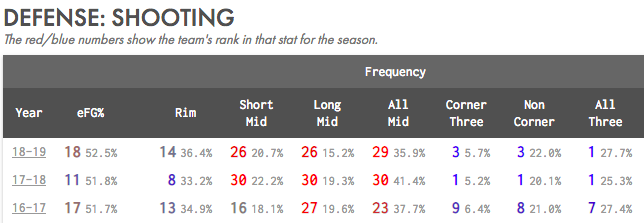The Nets' painful rebuild is finally bearing fruit
To casual NBA followers, the Brooklyn Nets look like any other middle-of-the-road team: a high-floor, low-ceiling outfit stuck in the purgatory between meaningful playoff contention and the promise of draft-lottery salvation. They have no surefire stars but some nice young pieces, some projected cap space, and all their own future first-round picks in the cupboard.
It's not a particularly good or bad place for a team to be. A few things break right, and they can become a perennial playoff competitor. A couple of things break wrong, and they might wind up on the treadmill of mediocrity.
But the mere fact that the Nets exist in this middle ground is a minor miracle. Finally freed from the long tentacles of the 2013 trade that sent a half decade's worth of draft capital to Boston for the husks of Paul Pierce and Kevin Garnett, the Nets can proceed on their own terms. When you consider the hell they emerged from, purgatory starts to look pretty nice.
Getting here was a process, which in many ways was just as arduous as Philadelphia's. Brooklyn's losing was never as incessant or shamelessly transparent as Philly's, but while the 76ers had a draft-pick bonanza to hold up as justification for their suffering, the Nets had nothing to remind them of what all the losing was for. For the most part, they just had to bear it, and wait. We haven't seen the culmination of their process, but we are seeing the fruits of their labor and their patience.
Making lemonade

The Nets looked to be on their way to another lost season after breakout wing Caris LeVert dislocated his ankle in November. The team dropped 11 of its next 13 games - with many of those losses coming in agonizing fashion - to fall to 8-18. Brooklyn's only silver lining was that it would finally have its own lottery pick as recompense.
But then, rather suddenly, the Nets found their footing. Their schedule softened, their luck in close games turned, and their rotation began to coalesce around their two lead guards, D'Angelo Russell and Spencer Dinwiddie. They immediately followed up an eight-game losing streak with seven consecutive wins, which included takedowns of the Toronto Raptors, 76ers, and Los Angeles Lakers. They've now won 12 of their last 15 - tied for the league's best record, with its fourth-best offense during that stretch - to rocket into the seventh seed in the Eastern Conference.
Brooklyn's leap to respectability may have come this season, but the groundwork was laid more than two years ago. Since the franchise was turned over to general manager Sean Marks and head coach Kenny Atkinson, the Nets have been operating like a forward-thinking NBA club. They're development-oriented, fiscally responsible - excluding their pursuit of Allen Crabbe - and focused on instilling their playing style with strong, analytically sound organizing principles.
Their managerial shrewdness and eye for undervalued talent - whether through unsexy late-first-round picks, or players who'd been cast aside by other organizations - have propelled the Nets past a handful of other rebuilding teams who were fortunate enough to have not flushed away four first-rounders. They had to squeeze every ounce of juice out of the lemon Billy King had left them, while resisting the urge to try and short-circuit the process.
Consider how the bones of their roster were built:
- They traded Mason Plumlee for the 23rd pick in 2015 that became Rondae Hollis-Jefferson;
- They dealt Thaddeus Young for the 20th pick in 2016 that became LeVert;
- They flipped Bojan Bogdanovic for the 22nd pick in 2017 and drafted Jarrett Allen;
- They moved Brook Lopez and the 27th pick in 2017 to acquire Russell, a 21-year-old scoring guard who was then just two years removed from being drafted second overall;
- They took on DeMarre Carroll's contract and snagged a 2018 first-rounder (Dznan Musa ... stay tuned) and second-rounder (the intriguing and already-contributing Rodions Kurucs) for their troubles;
- They picked up yet another first (the Nuggets' 2019 pick) for taking on the last year of Kenneth Faried's deal;
- Perhaps most presciently of all, they plucked Dinwiddie and Joe Harris off the damn scrap heap.
That's a run of foresight and fortune that even the league's most well-regarded front offices would be hard-pressed to replicate.
The Atkinson diet

The Nets have played hard and smart since Atkinson came aboard. He's trained them to hunt out the game's most efficient shots, while taking those same shots away from their opponents. They share the rock, execute their sets with gusto and precision, push the tempo off opponents' makes, and constantly cut and screen away from the ball. They've ranked no lower than eighth in the league in passes made per game the last three seasons, and rank fourth this year. The ball doesn't stick. Decisions are made instantaneously. They trust each other, and they trust their system.
In Atkinson's first year, the Nets were a 21-win team with an offensive and defensive shot spectrum that placed them in the company of the league's most cutting-edge clubs. They ranked fifth in 3-point attempt rate, fifth in at-rim attempt rate, seventh in free-throw rate, and 29th in mid-range attempt rate. Fast forward two seasons and their shot diet is virtually identical (though a shift in league-wide trends means their rankings for attempts at the rim and in the mid-range have both slightly regressed):

(Courtesy: Cleaning the Glass)
The difference is they now have personnel capable of taking advantage of the efficient looks they create. After ranking 26th and 24th in 3-point percentage the past two years, respectively, they're up to seventh this season.
They're finally an average rebounding team, after ranking in the bottom five the last two seasons, and they're crashing the offensive glass more aggressively without hurting their transition defense - which has ranked no worse than sixth in the Atkinson era, per Cleaning the Glass.
Also, for a second straight year, they're the best team in the NBA at running opponents off the 3-point line, and a top-two team at coaxing mid-range attempts.

(Courtesy: Cleaning the Glass)
The Nets have established good habits and have built a coherent identity, which is something many teams - including some far more talented than Brooklyn - cannot say. The results have taken a while to catch up to the process, but that gap is evaporating before our very eyes.
The straws that stir the drink
For as good a job as the front office and coaching staff have done, none of this would matter if the Nets' players hadn't taken meaningful strides on the court. That starts with Dinwiddie and Russell, who have posted strikingly similar numbers in carrying the team during this torrid 15-game stretch.
| Player | MPG | PPG | APG | TS% |
|---|---|---|---|---|
| Dinwiddie | 29.2 | 19.7 | 6 | 61.1 |
| Russell | 30.6 | 19.1 | 7.6 | 54.5 |
Dinwiddie finished third in Most Improved Player voting last season, and he's somehow made a far more significant leap this year. He's shooting better from every spot on the floor, taking his true-shooting mark from 52.7 to 60 percent. He's always been able to get into the teeth of the defense, but he's never been a particularly good finisher until now. On top of piling up free throws, he's shooting 67 percent at the rim this season, up from 57 percent last year, taking him from the 32nd to the 94th percentile for his position.
He's gotten craftier and more accurate using the high window, better at using his length and extending to keep the ball out of defenders' reach, and better at using his off-arm and lower body to create mid-air separation:
Dinwiddie's three-year, $34-million extension somehow already looks like a bargain less than a month after it was signed.
Russell isn't scoring nearly as efficiently as Dinwiddie, but he's by far the best Nets player at getting his own shot off and is in a really nice groove as a pick-and-roll operator. The biggest difference for him lately, apart from a nice run of 3-point shooting, is that he has a much better feel for when to be a facilitator. He can still get too dribble-happy, but even structured offenses need wild cards who can probe and keep defenses guessing.
Russell has great vision and is a naturally gifted passer, so it's been nice to see him embracing his role as a floor general now that he's firmly entrenched as Brooklyn's starting point guard:
The Nets will have a really interesting decision to make when Russell becomes a restricted free agent this summer, and that decision may ultimately be determined by whether they think he and Dinwiddie can play together. After a miserable start to the season, these last 15 games have been encouraging to that effect, as the Nets have an 8.5 net rating with a terrific 64.2-percent assist rate when the two share the floor during that span. It'll also be fascinating to see how they reintegrate LeVert into this mix if and when he returns this season, given how comfortable he was starting to look playing on-ball.
Harris, meanwhile, might be the biggest driver of Brooklyn's efficiency spike. He's morphed into the Nets' version of JJ Redick; he's shooting a league-leading 49.2 percent on 5.1 3-point attempts per game, and he might be the single most relentless off-ball mover in the league. But he's become far more than just a catch-and-shoot specialist. He's a heady passer and an increasingly capable ball-handler, which opens up all sorts of options when defenses sell out to take away his 3-ball when he flies off screens. He's shifty, and with his quickness, all it takes is one little ball fake to bust open a path to the rim:
Things have been slower to coalesce defensively for the Nets, despite their success at goading teams into inefficient shots. They're a bit soft at the point of attack, don't force many turnovers, and generally suffer from a lack of high-end talent. But they still staunchly stick to their principles at that end of the floor, and they've been victimized by some abnormally hot mid-range shooting from their opponents (though dropping their bigs way back has something to do with that).
They'll improve in time, and they already have two pillars of a potentially strong defensive foundation. Hollis-Jefferson is among the sturdiest wing defenders in the league, with the length and quickness to stay in front of guards and the strength to hold his ground against bulkier forwards. In Allen, the Nets have a bona fide at-rim deterrent, a nimble 20-year-old who's already become one of the most fearless shot-blockers in the league. The Nets are up to 11th in offensive efficiency; if their defense can catch up, they'd make for a seriously annoying playoff opponent.
Something from nothing
However the rest of the Nets' season plays out, for them to have come this far, this fast, is one of the NBA's most underappreciated triumphs. This team had nothing to build with, no roadmap, and no means of escaping the hole they'd dug themselves. But here they are. They haven't taken shortcuts; they've shown their work, and it's paying off.
LeVert was playing like a borderline All-Star before he got hurt, Dinwiddie has been playing like one since then, and the Nets can now dream of adding another significant piece or two in the 2019 offseason, when they'll own their own first-round draft pick for the first time since the Bronze Age. (It’s some kind of cruel irony that they have become competent at the very moment it actually behooves them to tank.) They have designs on signing a marquee free agent, and they have the cap space - and, finally, the organizational equity - to dream big.
The Nets have reason for optimism, which would've been impossible to imagine two years ago. There's a long way to go yet, but everyone involved deserves a ton of credit for the progress that's already been made.
HEADLINES
- Draymond leaves for locker room after heated exchange with Kerr
- Pelicans overcome AD's 35-point night to win 5th straight game
- Purdy's 5 TDs lead 49ers past Rivers, Colts on MNF
- Pacers' Carlisle wants NBA to review play that injured Jackson
- Bills, Chargers, Jaguars book playoff spots after Colts' loss to 49ers